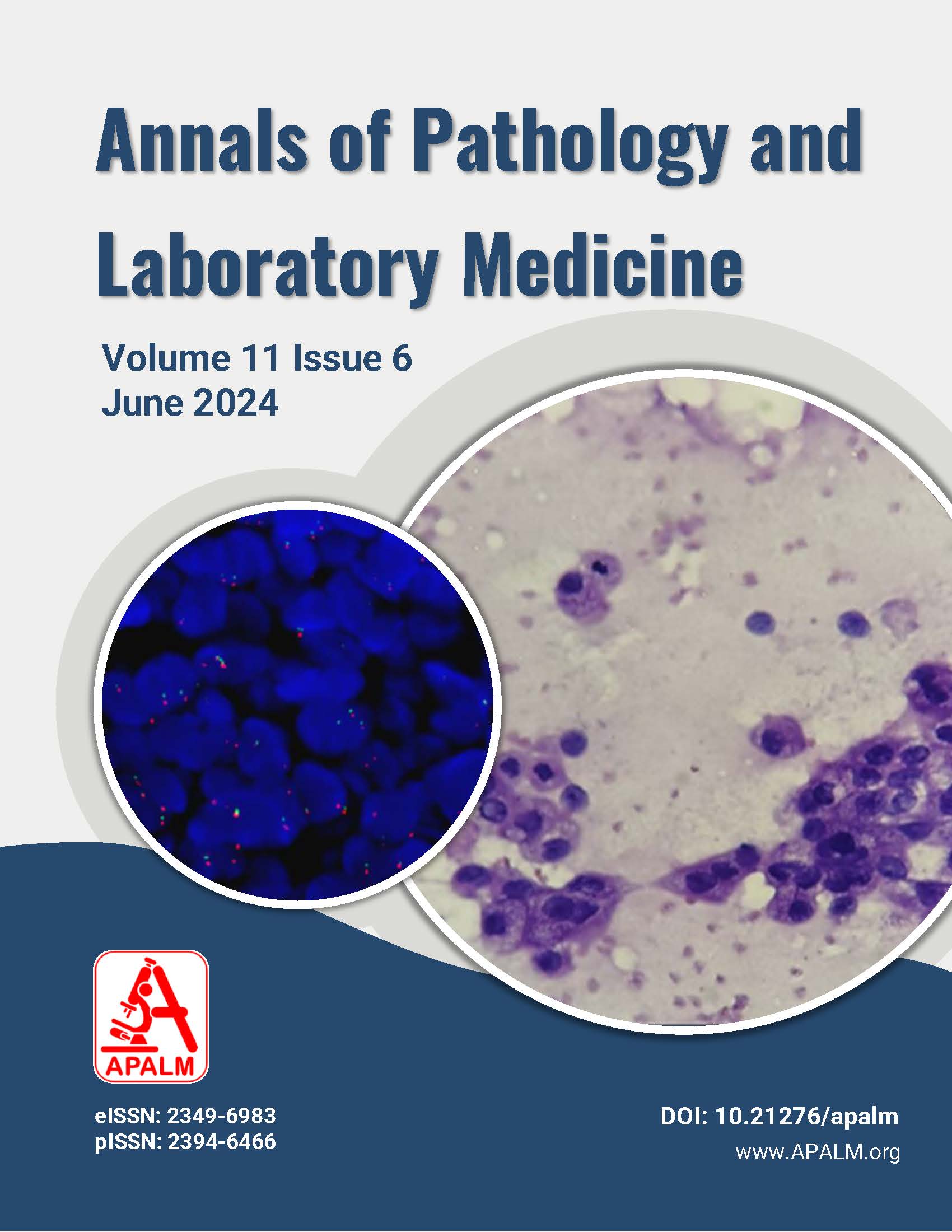Transfusion Effect of Single and Random Donor Platelets in Thrombocytopenic Pediatric Patients with Hematological Malignancy at Tertiary Care Hospital
DOI:
https://doi.org/10.21276/apalm.3342Keywords:
SDP, RDP, Corrected Count Increment, RefractorinessAbstract
Background
This study was performed to assess differences between Single Donor Platelets (SDP) and Random Donor Platelets (RDP) by evaluating the platelet increment in the form of corrected count increment (CCI), platelet transfusion reaction rates, and the development of refractoriness after multiple platelet transfusions.
Material and Methods
In this two-year prospective study performed at a tertiary care hospital, dose response to platelet transfusions was studied in 68 newly diagnosed pediatric patients with hematological malignancies admitted for induction chemotherapy. The study was divided into three groups based on the type of platelet transfusion received: RDP group: Patients who exclusively received Random Donor Platelets. SDP group: Patients who exclusively received Single Donor Platelets. RDP+SDP group: Patients who received both RDP and SDP. Statistical Analyses Used: Chi-Squared test.
Results
CCI at the end of one hour (1-HR) and 24 hours (24-HR) was significantly greater in the SDP group (p-value 0.0003 and 0.0001, respectively), showing better platelet count increment after SDP transfusion. In the SDP group, the increments after the first and last transfusions were in the same range, whereas in the RDP group, the increments decreased from the first to the last transfusion. Thus, the use of SDPs postponed refractoriness. Maximum cases of the RDP group showed platelet refractoriness (50%), of which 76% were refractory due to an immune cause. The majority of acute platelet transfusion reactions were seen in the RDP group (38.98%), with the most common reaction being febrile non-hemolytic transfusion reaction.
Conclusion
The SDP group showed a better response to platelet transfusion than the other groups (RDP group and RDP+SDP group).
References
Solves Alcania P. Platelet transfusion: An update on challenges and outcomes. J Blood Med. 2020;11:19-26.
Rajadhyaksha SB, Desai PD, Navkudkar AA. Global J Transfus Med. 2019;4(2):140-147.
Delaflor-Weiss E, Mintz PD. The evaluation and management of platelet refractoriness and alloimmunization. Transfus Med Rev. 2000;14(2):180-196.
Bishop JF, Mathews JP, Yuen K, McGrath K, Wolf MM, Szer J. The definition of refractoriness to platelet transfusions. Transfus Med. 1992;2(1):35-41.
Doughty HA, Murphy MF, Metcalfe P, Rohatiner AZ, Lister TA, Waters AH. Relative importance of immune and non-immune causes of platelet refractoriness. Vox Sang. 1994;66(3):200-205.
Daly PA, Schiffer CA, Aisner J, Wiernik PH. Platelet transfusion therapy: One-hour post transfusion increments are valuable in predicting the need for HLA-matched preparations. JAMA. 1980;243(5):435-438.
Bishop JF, Mathews JP, Yuen K, McGrath K, Wolf MM, Szer J. Factors influencing 20-hour increments after platelet transfusion. Transfusion. 1991;31(5):392-396.
Slichter SJ, et al. Factors affecting post transfusion platelet increments, platelet refractoriness, and platelet transfusion intervals in thrombocytopenic patients. Blood. 2005;105(10):4106-4113.
The Trial to Reduce Alloimmunization to Platelets Study Group. Leukocyte reduction and ultraviolet B irradiation of platelets to prevent alloimmunization and refractoriness to platelet transfusions. N Engl J Med. 1997;337(26):1861-1869.
Gmur J, et al. Delayed alloimmunization using random single donor platelet transfusions: A prospective study in thrombocytopenic patients with acute leukemia. Blood. 1983;62(2):473-479.
Singh RP, Maratha N, Amphora P, Dash S. Therapeutic efficacy of different types of platelet concentrates in thrombocytopenic patients. Indian J Hematol Blood Transfus. 2008;24(2):1448-1453.
Zhang JC, Ni LH, Tu Y, Hu HX. Related donor platelet transfusion improves platelet transfusion refractoriness in hematological patients. Front Med (Lausanne). 2023;10:983644.
Comont T, et al. Platelet transfusion refractoriness in patients with acute myeloid leukemia treated by intensive chemotherapy. Leuk Res. 2017;61:62-67.
Heddle NM, et al. A randomized controlled trial comparing the frequency of acute reactions to plasma removed platelets and pre-storage WBC reduced platelets. Transfusion. 2002;42:556-566.
Ness PM, Daou L. Single donor platelets versus whole blood derived platelets: Are they the same? Ann Blood. 2020;5.
Downloads
Published
Issue
Section
License
Copyright (c) 2024 Nikita Surana, Kavita Prakash Sawant, Shreya Devidas Badhe

This work is licensed under a Creative Commons Attribution 4.0 International License.
Authors who publish with this journal agree to the following terms:
- Authors retain copyright and grant the journal right of first publication with the work simultaneously licensed under a Creative Commons Attribution License that allows others to share the work with an acknowledgement of the work's authorship and initial publication in this journal.
- Authors are able to enter into separate, additional contractual arrangements for the non-exclusive distribution of the journal's published version of the work (e.g., post it to an institutional repository or publish it in a book), with an acknowledgement of its initial publication in this journal.
- Authors are permitted and encouraged to post their work online (e.g., in institutional repositories or on their website) prior to and during the submission process, as it can lead to productive exchanges, as well as earlier and greater citation of published work (See The Effect of Open Access at http://opcit.eprints.org/oacitation-biblio.html).










